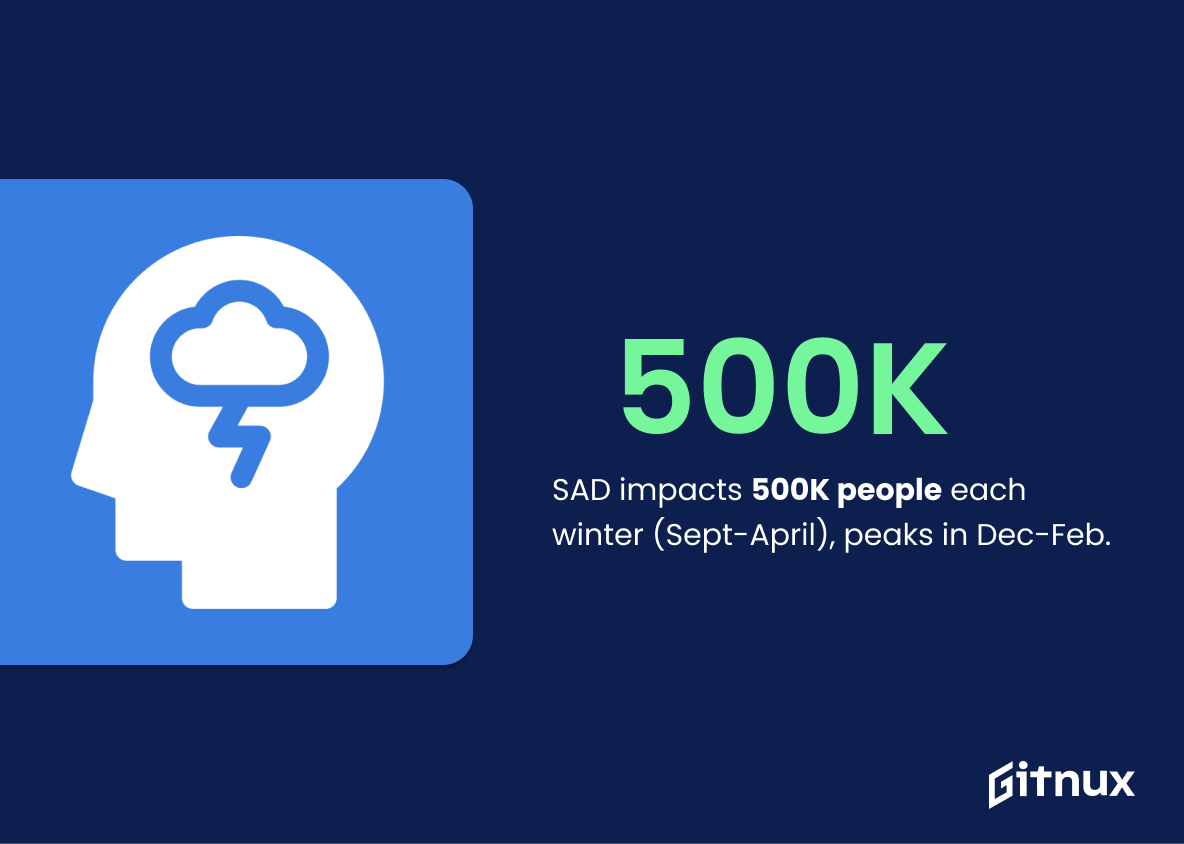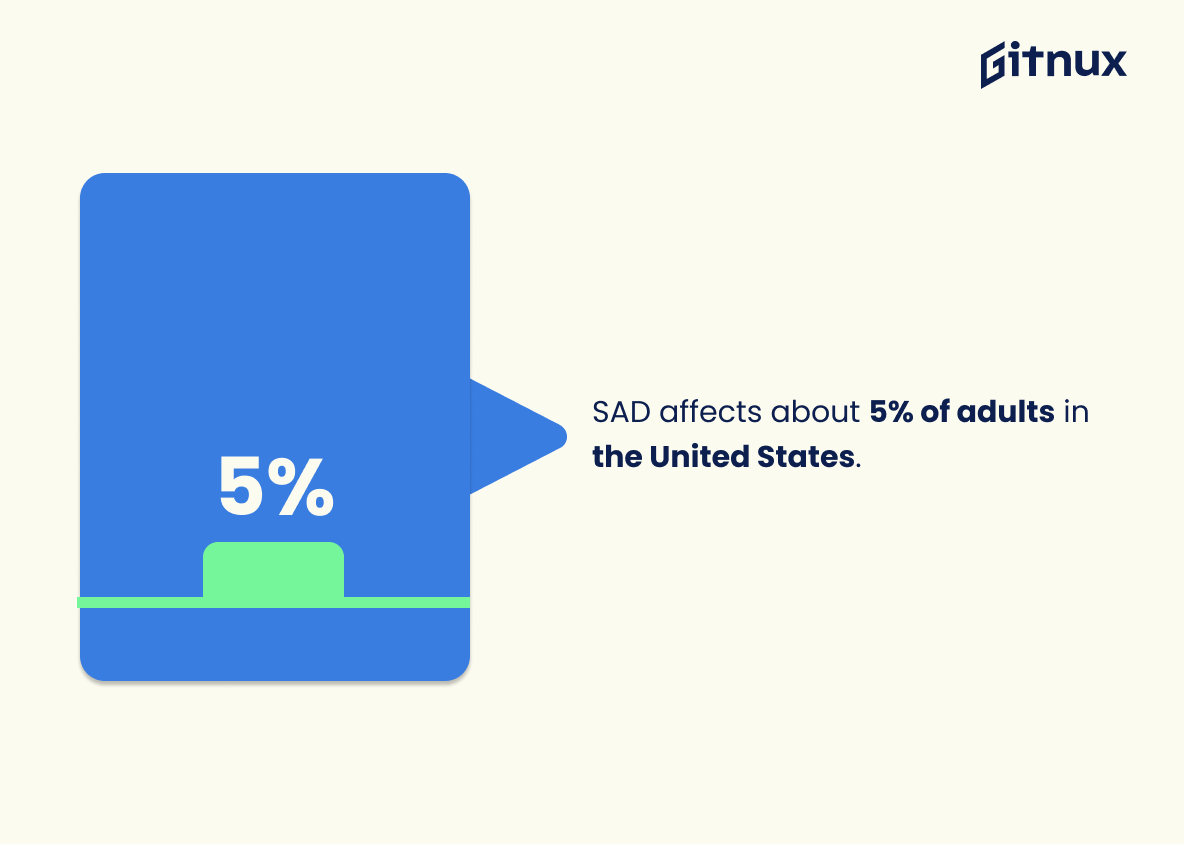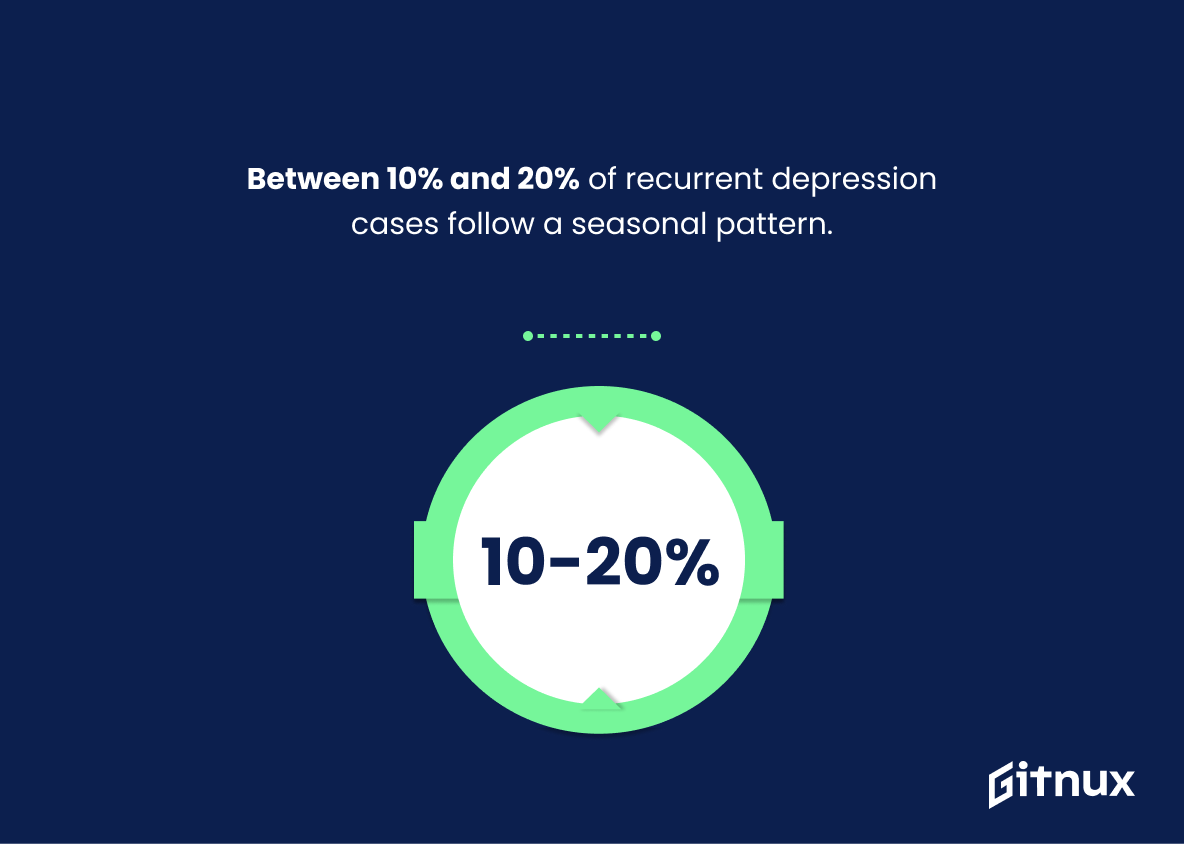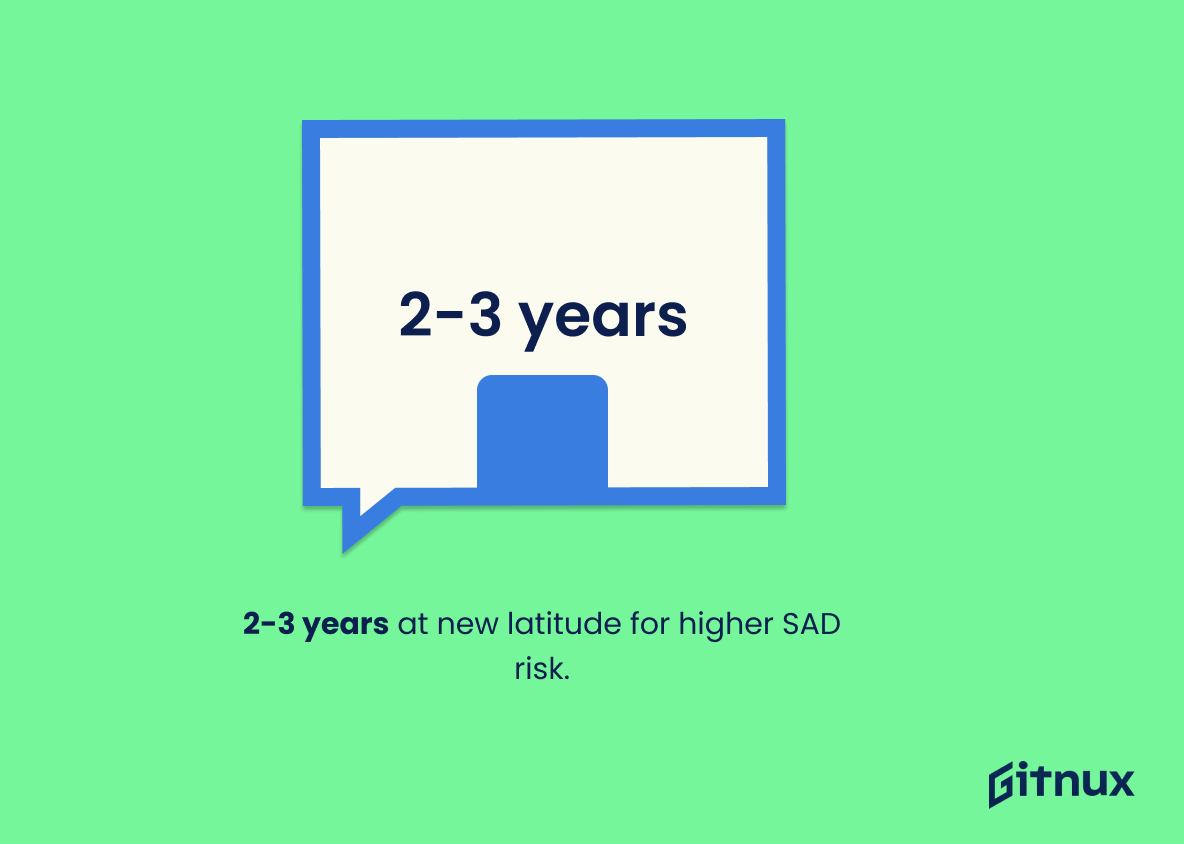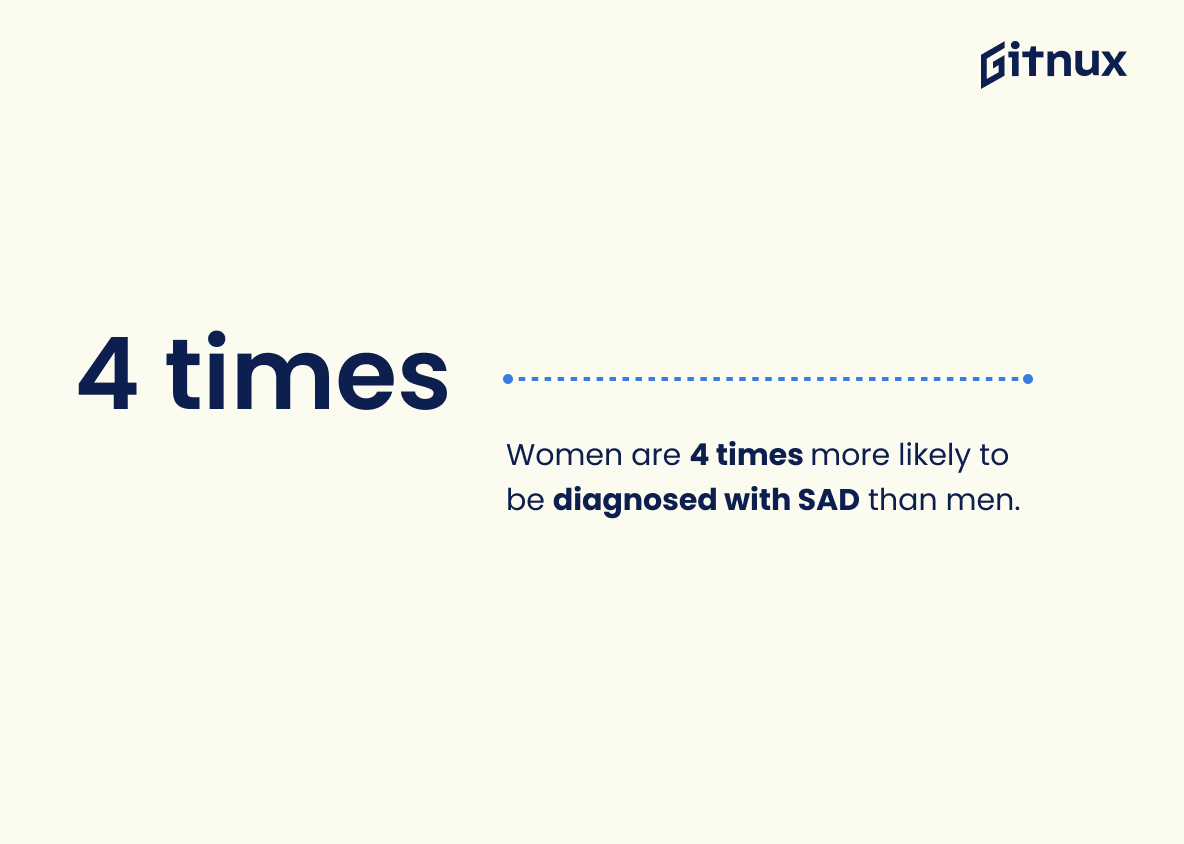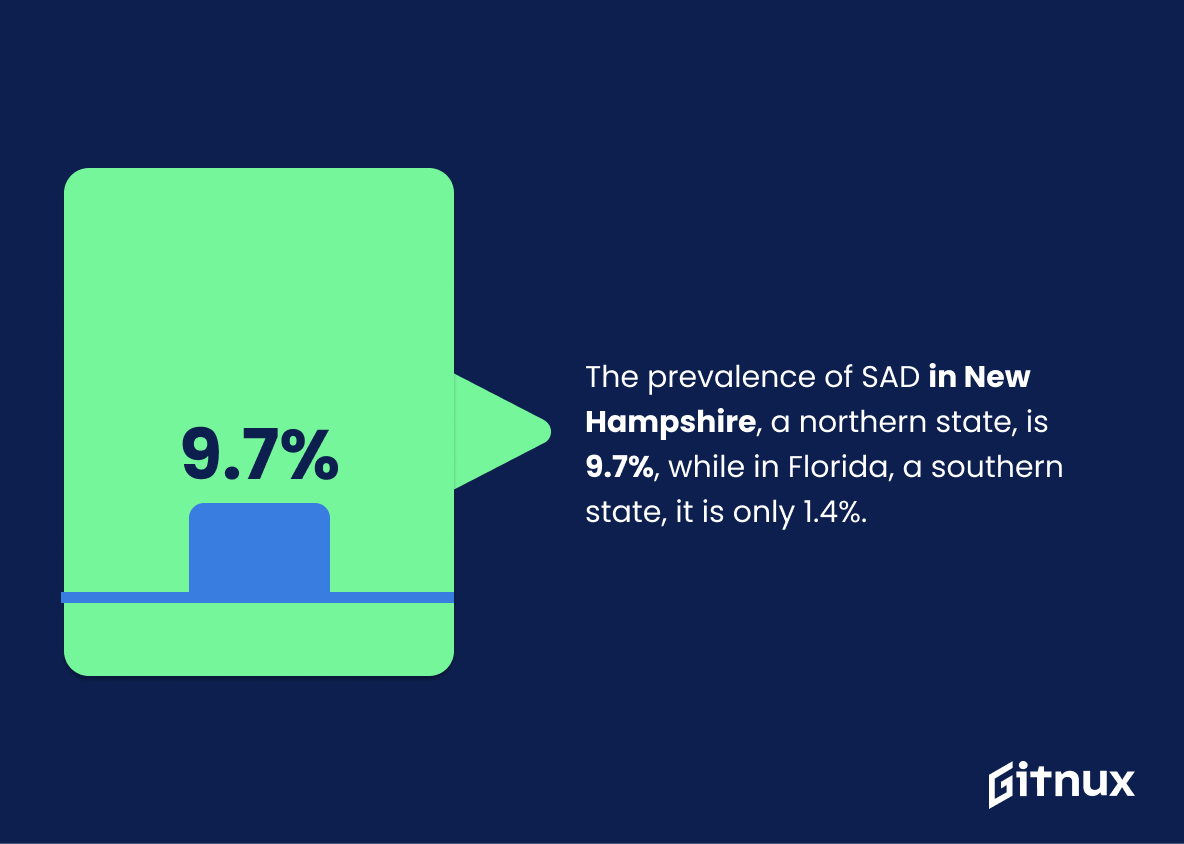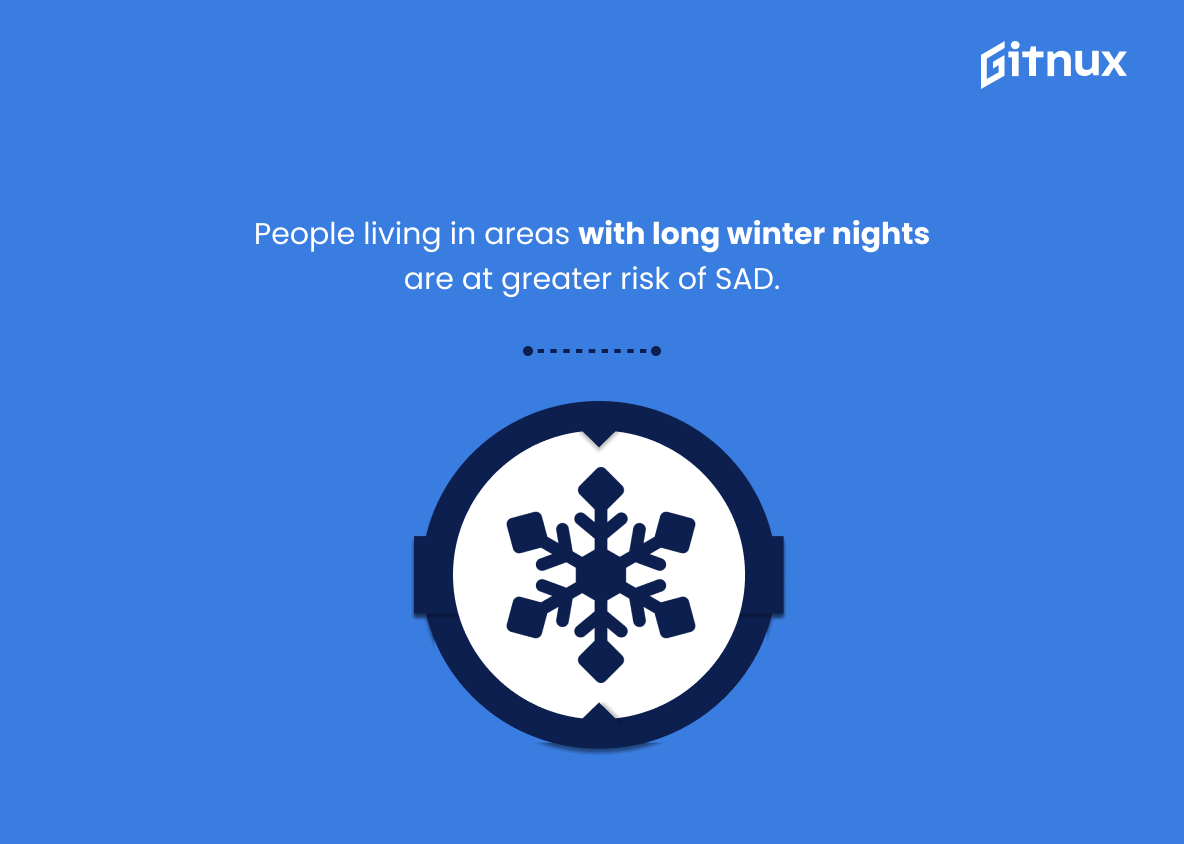The transition of seasons, for some, isn’t just about swapping wardrobes or adjusting thermostats. There’s a less anticipated change that affects millions worldwide – Seasonal Affective Disorder (SAD) or what many know as Seasonal Depression. As sunlight diminishes and temperatures drop, these individuals confront a unique set of challenges, marked by prolonged periods of sadness and lethargy.
This blog post aims to confront this often-overlooked mental health concern head-on through an exploration of seasonal depression statistics. Gain valuable insight into the prevalence, patterns, and demographics associated with Seasonal Depression, leading to a clearer understanding and informed discourse. Through this knowledge, we can collaborate in uplifting those weighed down by the invisible chains of seasonal depression.
The Latest Seasonal Depression Statistics Unveiled
Seasonal affective disorder (SAD) affects about half a million people every winter between September and April, peaking in December, January, and February.
In the realm of seasonal depression statistics, the fact that Seasonal Affective Disorder (SAD) plagues approximately half a million people annually from September to April, reaching its zenith in the chilly months of December, January, and February, sheds light on a somber yet pressing reality. These startling numbers underscore the pervasiveness of this condition and the chilling grip it holds during winter’s darkest months.
This data reminds readers of the magnitude and relevance of SAD, serving as a wake-up call to those who underestimate its impact. Ultimately, such an enormous figure adds a layer of gravitas to our discussion on the topic, underlining the dire need for ongoing research, prevention strategies, and effective treatments for those wrestling with the winter blues, ultimately illuminating a path towards a brighter, more hopeful future.
SAD is diagnosed more often in women than in men, and it primarily happens in younger adults.
Delving into the difference in diagnosis prevalence between genders, it’s fascinating to note that Seasonal Affective Disorder (SAD) is more rampant among women than men. Not stopping at that, it predominantly targets younger adults, shedding further light on the demographic most susceptible to this ailment. In a blog post discussing Seasonal Depression Statistics, these details paint a vivid picture of the group demanding heightened vigilance and potentially, specialized interventions.
Furthermore, they raise intriguing questions about the underlying reasons and potential biopsychosocial factors contributing to this gender and age disparity in SAD’s epidemiology. Such insights foster a deeper understanding, fuel future research, and guide effective mental health campaigns to mitigate the impact of SAD.
4 out of 5 people who have seasonal depression are women.
Highlighting the statistic ‘4 out of 5 people who have seasonal depression are women’ in a blog post about Seasonal Depression Statistics serves to spotlight the gender-centric inclination of this mental health disorder. It throws a pivotal illumination on female predisposition towards seasonal affective disorder. Consequently, this critical information could be an incentive for medical professionals and researchers to delve into the potential reasons for such higher vulnerability among women.
Understanding these elements of disparity could lead to tailored treatment methods that would cater to this particularly vulnerable demographic, consequently enhancing the effectiveness of interventions for seasonal depression.
SAD affects about 5% of adults in the United States.
Reflecting on the prevalence of Seasonal Affective Disorder (SAD), the aforementioned statistic intrigues as it underscores an unseen mental health crisis within the US. The fact that 1 in 20 adults in the US grapples with SAD brings to light the magnitude and severity of this lesser-known form of depression.
Incorporating this statistic in the blog post about Seasonal Depression would not only enhance understanding, but also raise awareness about a significant percentage of the population silently suffering every seasonal change. Hence, it’s more than a number; it’s a critical call to action for greater research, better treatment options, and public understanding.
Between 10% and 20% of recurrent depression cases follow a seasonal pattern.
Peering into the spectrum of recurrent depression reveals a remarkable color of data – a blending of 10% to 20% cases that faithfully trace a seasonal rhythm. This frequency fluctuation has profound significance, adding a distinct hue to our understanding of seasonal depression.
Like the changing leaves of an autumn tree, this statistic subtly underscores the consistency of seasonality in depression’s recurrence, painting an unmissable signpost for mental health researchers, practitioners, and patients alike. Unequivocally, it glides our discourse towards recognizing, anticipating, and addressing seasonal depression with accuracy and foresight, vitalizing the relevance of our blog post on Seasonal Depression Statistics.
Approximately 10%-20% of the U.S. population may experience mild SAD symptoms.
In framing our understanding of seasonal depression statistics, the finding that around 10%-20% of the U.S. population may experience mild Seasonal Affective Disorder (SAD) symptoms illuminates a critical dimension not to be ignored. It shines a spotlight on a large, sometimes overlooked, segment of the population, hinting at the widespread yet often unrecognized influence that changing seasons have on mental health.
This information, for a blogger, is a powerful lens to explore the many layers and nuances of seasonal depression – from its subtle steps to the feeling of melancholy. Beyond the gloomy figures, it unravels opportunities to harness shared experiences, inspire conversations and, crucially, advocate for better mental health support and awareness. So, let this be a call to action. With potential millions silently suffering, perhaps it is time to change our collective tune about seasonal depression.
It takes 2-3 years after moving to a new latitude for most people to increase their chances of experiencing SAD symptoms.
Delving into this intriguing statistic reveals a fascinating facet of the human condition and its relationship with geographical location. Upon unpacking the claim that a move to a new latitude typically necessitates a 2-3 year period before most individuals experience an uptick in Seasonal Affective Disorder (SAD) symptoms, we tread deeper into the realm of seasonal depression.
For followers of the seasonal depression discussion, this tapestry of data serves as a roadmap, charting potential changes in mental health that could follow a significant change in living coordinates. Furthermore, it provides a glimpse into the subtleties of the human body’s adjustment to new environments – a temporal warning sign that allows for preemptive management and increased awareness of potential SAD risk following such a relocation.
Ultimately, this statistic lays a cornerstone in constructing a broader narrative about seasonal depression, providing both valuable insight for those who have recently moved or are considering moving, and serving as a springboard for further discourse on the complexities of SAD. It stands as a beacon, illuminating and emphasizing how change – be it in lighting, temperature, or locale – does indeed come bearing psychological implications that are essential to giving voice to within the seasonal depression narrative.
Women are 4 times more likely to be diagnosed with SAD than men.
Breaking down the layers of the poignant datum – ‘Women are 4 times more likely to be diagnosed with SAD (Seasonal Affective Disorder) than men’ underlines an imperative viewpoint. It has a potential to steer the discourse in the direction that promotes gender-sensitive healthcare provision. This nugget of information emboldens our need to understand, empathize, and stand in solidarity with all individuals challenged by this form of depression.
Furthermore, it conveniently updates readers about the increased susceptibility of women, fostering an urgency to address this reality. Drawing attention to this gender disparity, it encourages a more comprehensive, inclusive, and targeted approach towards investigating the pathophysiology of SAD, researching the reasons, and designing gender-specific treatment plans.
The prevalence of SAD in New Hampshire, a northern state, is 9.7%, while in Florida, a southern state, it is only 1.4%.
Undoubtedly, statistics such as the fact that Seasonal Affective Disorder (SAD) affects 9.7% of the population in the northern state of New Hampshire as opposed to its 1.4% prevalence in the southern state of Florida, play a pivotal role within a blog post discussing Seasonal Depression Statistics. This stark contrast highlights the significant role that geographical locations, and by extension, varying weather and sunlight exposure, play in the incidence of SAD.
Moreover, these numbers illuminate the seriousness and reach of SAD as a mental health issue, offering indispensable insights to clinicians, policy makers, and the general public alike about the potential environmental triggers and risks for this condition.
People living in areas with long winter nights are at greater risk of SAD.
Highlighting the compelling statistic that individuals dwelling in regions with long, gloomy winter nights are more vulnerable to Seasonal Affective Disorder (SAD) has immense value in a blog post discussing Seasonal Depression Statistics. In the grand tapestry of psychometric data, this particular thread provides actionable insights for both mental health professionals and policy-makers.
It serves as a compass, guiding the allocation of resources to combat this pervasive and demoralizing condition. Moreover, it serves to underscore the profound impact of environmental factors on mental health, fostering a broader awareness and deeper understanding of SAD among the general populace.
Studies show that 10-20% of all cases of recurrent depression are seasonal.
Delving into the narrative of Seasonal Affective Disorder (SAD), the statistic you mentioned elegantly weaves an essential thread. It magnetically draws our attention towards an intriguing comparison: 10-20% of all recurrent depression cases being linked to the changing seasons. Translated to plain speak, it suggests that for every 5 individuals who repeatedly face the gloomy clutches of depression, there’s at least one person for whom the icy winters or dreary rains can trigger rounds of deep melancholia.
This stark resonance is not just a number; it’s a mirror reflecting the profound relevance of seasons in dictating our mental health. It truly demands a closer inspection, shining a spotlight on the pressing need to address and incorporate the seasonal context when we’re discussing, analyzing, or developing countermeasures for depression.
25% of SAD sufferers say their symptoms are moderately severe, while about 36% describe their symptoms as mild.
In the realm of dialogues about Seasonal Affective Disorder (SAD), this statistical nugget serves as a potent thread, weaving a tapestry of critical insights. It bares a frank reality: a striking 25% of individuals grappling with SAD categorize their symptoms as moderately severe, indicating a substantial chunk of the population that might be struggling more than what meets the eye.
Adding another color to our knowledge canvas is the surprising revelation that 36% outline their symptoms as mild. From the lens of an optimistic observer, this could imply that more than a third of SAD sufferers might potentially articulate their battles with the disorder in a manageable light, a silver lining amongst the typically gray discussions around seasonal depression.
Thus, these statistics inject a much-needed dose of perspective into our blog post. They provide us with a nuanced understanding of the varying degrees of SAD’s impact, helping us engage in a more empathetic and informed discourse about Seasonal Depression, ultimately enabling us to give justice to the multi-faceted narratives of those we write about in our blog.
In a study, 29% of patients with major depressive disorder were found to have seasonal depression.
Diving into the intriguing world of seasonal depression statistics, the revelation that nearly a third of individuals battling major depressive disorder also contend with seasonal depression, invites an important conversation. Within this landscape, the haunting 29% statistic serves as a critical waypoint, cohesively connecting the seemingly distant realms of general depression and its seasonal counterpart.
It’s like finding a unique intersection on the vast map of mental health, guiding healthcare practitioners and patients alike to a deeper understanding of interlinked mental conditions. Moreover, it equips readers with beacon-like knowledge, empowering those who journey through the challenging valleys of depression, to better navigate their path towards healing and recovery.
Conclusion
Seasonal depression is a significant public health issue affecting millions worldwide. The statistics are clear: seasonal affective disorder is not just ‘winter blues’ but a clinical condition that demands attention and understanding. As we continue to explore the impact of environmental changes on mental health, raising awareness about seasonal depression and its prevalence becomes critically essential.
The disheartening figures can offer a silver lining by inciting action to reduce these statistics. It is crucial for everyone to acknowledge, understand, take preventative measures where possible, and seek professional help when necessary. Together, we can combat seasonal depression, and make the colder months less daunting for everyone affected.
References
0. – https://www.depts.washington.edu
1. – https://www.apnews.com
2. – https://www.www.verywellmind.com
3. – https://www.www.mentalhealth.org.uk
4. – https://www.www.healthline.com
5. – https://www.www.nimh.nih.gov
6. – https://www.www.cambridge.org
7. – https://www.www.ncbi.nlm.nih.gov
8. – https://www.my.clevelandclinic.org
9. – https://www.jamanetwork.com
10. – https://www.www.sciencedaily.com
